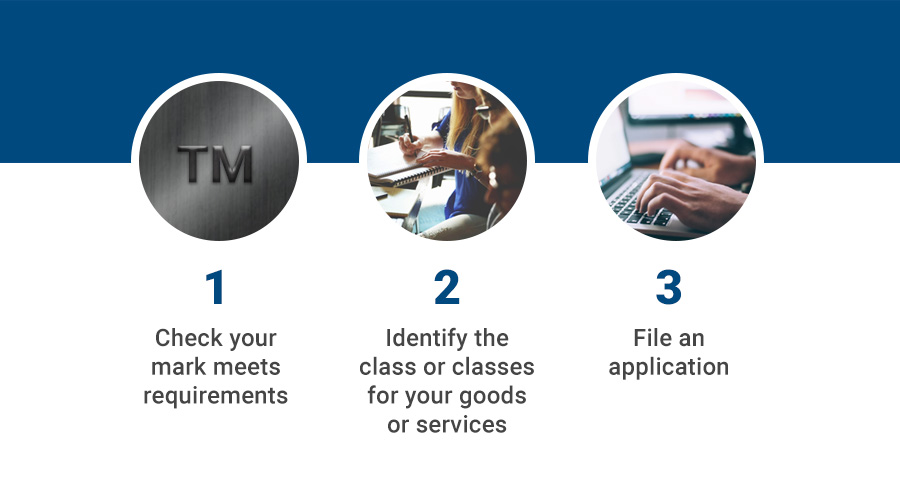Intellectual Property in Commercial Settings
How do I register a trade mark?
You must apply to IP Australia if you wish to register a trade mark. A trademark examiner will review your application to ensure your mark complies with the Trade Marks Act 1995 (Cwlth). If your application is accepted, it is published so that members of the public have the opportunity to review it and object to it if they see fit. During this period, you can't substantially amend your trade mark application or classes of the goods and services you've nominated, so it's important you research and prepare your application thoroughly or engage a trade mark attorney. Your trade mark will be registered if it is compliant and your application isn't successfully challenged.

1. Check your mark meets all of the requirements
The first step of applying for trade mark registration is to determine that your mark meets the requirements. You may wish to conduct a general search on what are the common words or phrases in your business or trade in order to avoid choosing a mark that is too descriptive or which is not distinctive enough. You should also search the trade marks register for any similar marks that are already registered.
How to search the Australian trade mark register
You can avoid applying for a trade mark that is already taken by conducting an Australian trade mark search. Go to IP Australia and watch their videos to find out how.
Australian trade mark search – get ready to search video series
2. Identify the relevant class or classes for your goods or services
In your application you must describe the goods and/or services you want to protect with a trade mark. This means you must identify the relevant class or classes in the trade mark system.
Classes of goods and services
Visit IP Australia for an introduction to Classes of goods and services and watch the first video in the Choose Wise series to understand the importance of identifying the most appropriate class or classes in your application.
Choose Wise: Introduction to goods and services (1 min 44 secs)
Online tools
IP Australia has tools you can use to help you identify the relevant classes for your goods and services.
3. File an application
In Australia, you can file your trade mark application online. Go to the IP Australia website for the latest information on the options available.
You may decide to use the pre-application service to assess your application before it is officially submitted and made public. The examiner will identify any problems with the application, give feedback and advise you on the registrability of the mark. This may be a good option if you are unsure of your trade mark’s eligibility or you would like the opportunity to make amendments to the application if required.
Alternatively you may opt to file a standard application. Your application is published so members of the public can raise objections to the proposed mark if they see fit. Importantly, you can only make minor changes to your trade mark once it is published. The trade mark registrar assesses your application to ensure there are no grounds for refusal and, if all goes well, the trade mark is registered for an initial period of ten years.
Who might object and why?
Think back to the requirements for a trade mark. Who do you imagine might oppose registration of your mark and on what grounds?
